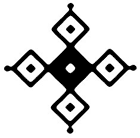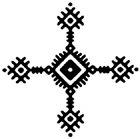 Clicking
on an image will open another window. You can use the second window
to scroll through all the enlarged images associated with this article
Clicking
on an image will open another window. You can use the second window
to scroll through all the enlarged images associated with this article |
The Henna Page Journal |
|
|
Biological, Social and Metaphysical Aspects of Childbirth and Postpartum |
|
Henna is becoming more widely available in western countries at present due to the popularization of henna body art in western pop culture (Maira S, 2000), so childbirth and postpartum henna traditions could be performed. Henna’s association with beautification and protection from evil are comforting. Henna’s requirement that a woman be still for several hours during and after application insures that a mother will rest and allow others to take care of her! During the weeks after ornate henna patterns are applied, a woman is culturally allowed to not do household tasks that would spoil the beauty of the stains. This increases the likelihood that she will rest properly to regain her strength after giving birth.
A woman goes through a social status change when she becomes a mother, and her relationship with her husband, other family members, and social group is changed. Caring for and nursing a neonate requires much from woman’s physical and emotional resources. These stresses added to the precipitous fall in estrogen and progesterone levels following birth, coupled with the elevation of prolactin in the first week postpartum are believed to give rise to irritability, mood changes, tearfulness, guilt, anxiety, fatigue and feelings of inadequacy. In extreme cases, the symptoms of postpartum psychosis include agitation, confusion, hallucinations, fatigue, delirium and diminished thinking (Stern and Kruckman, 1983). Though women universally experience the biological processes of the postpartum adjustment, they conceive of these changes through their social and religious constructs (Kleinman, 1978; and Cosminsky, 1977). |
|
|
|||
| [Home] [How] [Why] [What] [Where] [FAQ] [Forum] | |||


